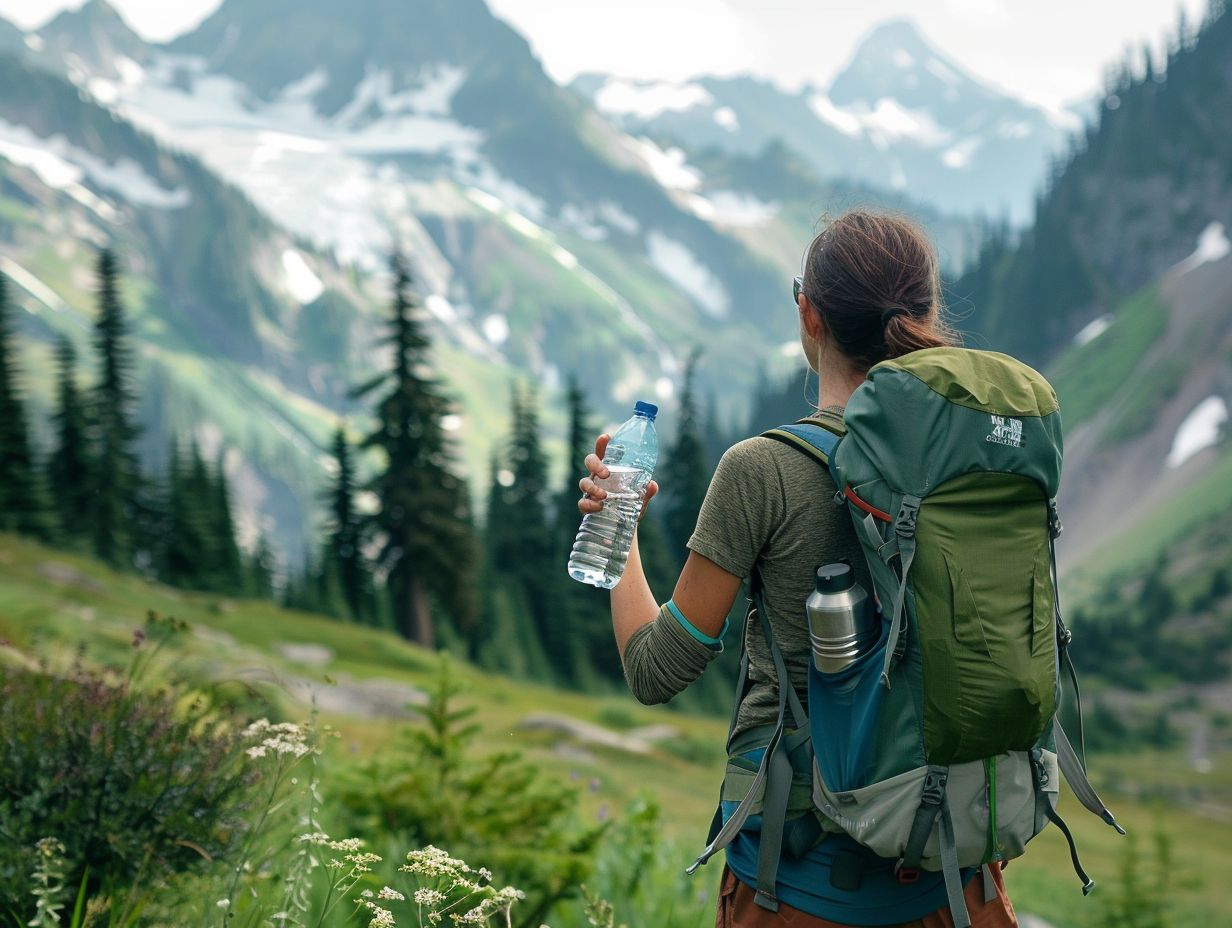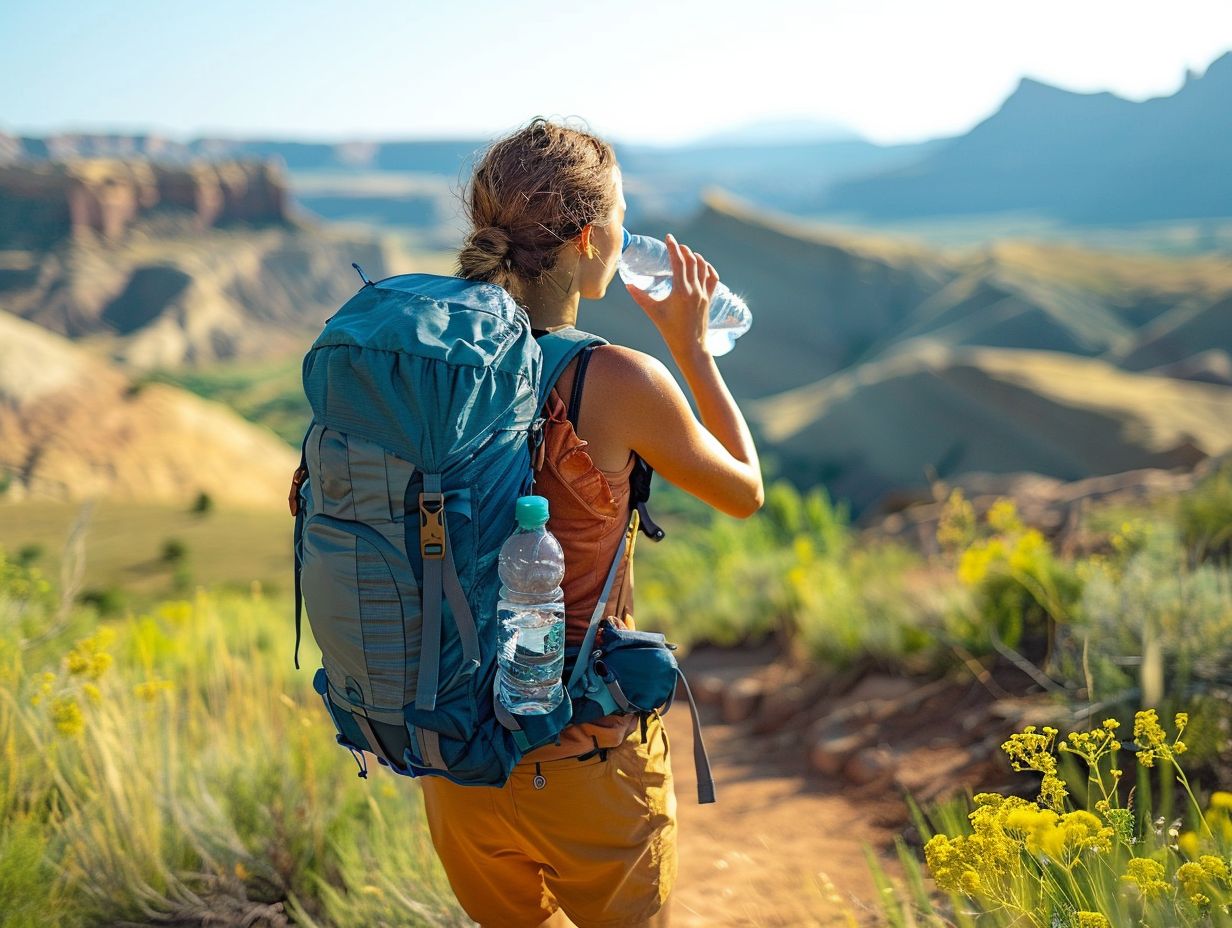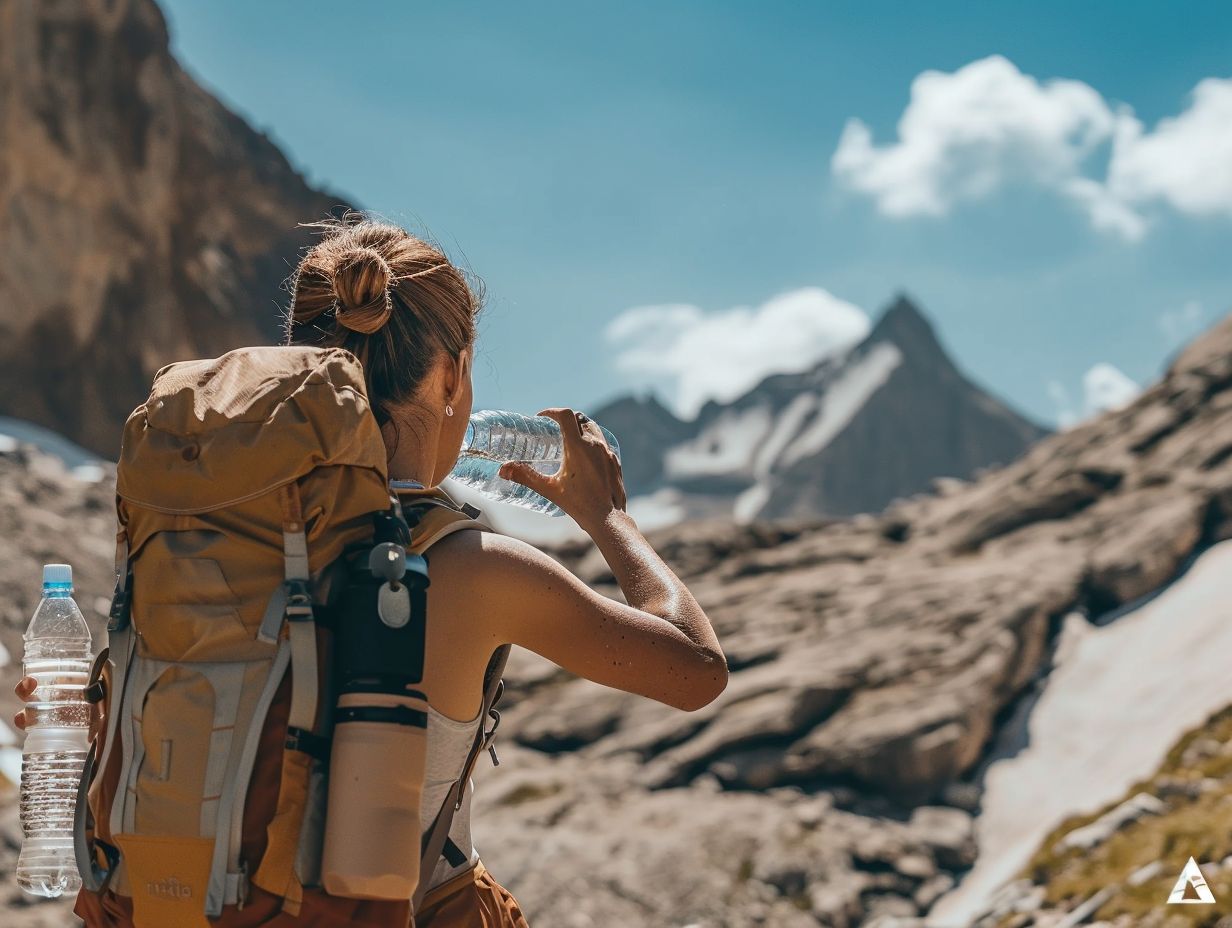When hiking, it is crucial to prioritize staying properly hydrated to ensure an enjoyable and safe outdoor experience. Dehydration poses a significant risk, particularly in hot weather or at higher altitudes.
This discussion will cover the dangers of dehydration, factors influencing hydration requirements, selection of appropriate hydration equipment, techniques for maintaining hydration levels while hiking, preventive measures against dehydration on the trail, and post-hike hydration management.
Acquiring knowledge about these strategies is essential for maintaining optimal hydration levels during your outdoor excursions.
Key Takeaways:

- Stay ahead of dehydration risks by understanding your body’s hydration needs and choosing the right gear to carry and access water while hiking.
- Implement hydration strategies such as drinking water before, during, and after a hike, and using electrolyte supplements to replenish fluids lost through perspiration.
- Proactively prevent dehydration by staying aware of environmental and personal factors that can affect your hydration needs and following tips for staying hydrated on the trail.
Hydration Strategies for Hiking
When embarking on a hike, it is crucial to implement hydration strategies to maintain optimal performance and health on the trail. You should prioritise staying hydrated, drinking cool water, and balancing electrolytes to ensure you are properly fuelled for your hike.
To prepare your body for the physical demands of the hike, it is important to start hydrating before you begin the trail. Consistently sipping water during the hike will help you sustain hydration levels and support your overall well-being. Opting for slightly cool water can enhance refreshment and prompt you to drink more frequently.
Electrolytes play a crucial role in sustaining proper hydration levels, so it is advisable to include electrolyte-rich snacks or drinks to replenish what is lost through sweating during the hike. These hydration strategies will help you perform optimally and stay healthy throughout your hiking adventure.
When and How Much to Drink
Understanding When and How Much to Drink is essential for hikers like you to prevent dehydration and maintain peak performance. Factors such as water intake, individual hydration needs, and the utilization of electrolyte tablets are crucial in crafting a reliable hydration strategy.
When you’re out hiking, it’s vital to take into account the timing and volume of water consumption, which should be based on the duration and intensity of your trek. Each hiker may have unique hydration requirements influenced by factors like age, weight, and fitness level.
In hot and humid conditions, electrolyte tablets can be advantageous in balancing the body’s electrolytes to ward off muscle cramps and fatigue. These tablets aid in replenishing vital minerals lost through sweat and bolstering overall hydration levels during extended treks in demanding terrains.
Preventing Dehydration on the Trail
Preventing Dehydration on the Trail should be a top priority for you as a hiker to ensure a safe and enjoyable hiking experience. Recognising dehydration symptoms early, staying hydrated, and utilising available water sources are key aspects of dehydration prevention.
One effective strategy for preventing dehydration while hiking is to carry an adequate supply of water and drink regularly throughout the hike. It is crucial for you to listen to your body and consume water even before feeling thirsty.
Wearing breathable clothing and a hat to shield yourself from the sun can help regulate body temperature and reduce the risk of dehydration. Planning your route to include water sources or carrying purification tablets can also ensure access to safe drinking water during the hike.
Tips for Staying Hydrated During a Hike

Regarding staying hydrated during a hike, following these Tips for Staying Hydrated During a Hike can greatly enhance your overall hiking experience. Managing your water supply effectively, considering the weight of water, and ensuring easy access to water are key factors to keep in mind for maintaining proper hydration levels.
A practical approach to efficiently managing your water supply is to carry a hydration pack or water bottles equipped with built-in filters. This allows you to easily refill your water from natural sources found along the trail.
Additionally, understanding the weight of water is crucial. Keep in mind that 1 litre of water weighs approximately 2.2 pounds, so plan your water consumption accordingly to prevent carrying unnecessary weight.
To ensure convenient access to your water while on the move, consider using a hydration bladder with a tube. This setup enables you to stay hydrated by providing a simple and accessible way to sip water during your hike.
Managing Hydration After a Hike
Managing your hydration after a hike is crucial for recovery and maintaining optimal health. It’s essential to replenish the fluids and electrolytes you lost during the hike to restore your body’s equilibrium and ensure proper hydration levels post-activity.
Dehydration can have negative consequences such as fatigue, muscle cramps, and reduced cognitive function, which can impede your body’s ability to recover efficiently.
Water and electrolytes are essential for regulating bodily functions and are vital for muscle contractions, nerve impulses, and maintaining fluid balance.
By promptly replenishing lost fluids and electrolytes after a hike, you help support your muscles and organs in repairing any damage and replenishing energy stores.
Proper hydration also assists in eliminating toxins from the body, promotes improved digestion and nutrient absorption, and contributes to your overall well-being.
Replenishing Fluids and Electrolytes
After completing a hike, it is essential to replenish fluids and electrolytes to restore your body’s balance and support recovery. Opting for sports drinks such as Gatorade or products from Skratch Labs can effectively help in replenishing lost fluids and electrolytes.
These sports drinks are specifically designed to include the appropriate mix of sugars and electrolytes, making them well-suited for post-exercise replenishment. Gatorade, a prominent name in the sports drink sector, provides a variety of flavours to cater to diverse preferences.
Conversely, Skratch Labs prides itself on the use of natural ingredients and the avoidance of artificial additives, offering a more wholesome alternative for individuals seeking a natural approach to fluid replenishment. Both brands offer convenient solutions for efficiently replenishing nutrients lost during physical activity.
Frequently Asked Questions
What are the best strategies for hydration while hiking?
The best strategies for hydration while hiking include drinking plenty of water before, during, and after your hike, using a hydration pack or water bottle with a filter, and staying aware of your body’s hydration needs.
Why is hydration important while hiking?

Staying hydrated while hiking is crucial for maintaining physical and mental performance, regulating body temperature, and preventing dehydration and heat-related illnesses.
How much water should I bring on a hike?
As a general rule, it is recommended to bring at least 2 litres of water per person for a full day of hiking. However, the amount may vary depending on factors such as length and intensity of the hike, weather conditions, and individual hydration needs.
What are some signs of dehydration to watch out for while hiking?
Signs of dehydration while hiking may include thirst, dry mouth, fatigue, dizziness, headache, dark-coloured urine, and decreased urine output. It’s important to stay aware of these symptoms and drink water regularly to prevent dehydration.
Are there any hydration alternatives to water while hiking?
Yes, aside from water, you can also hydrate with sports drinks, electrolyte tablets, and coconut water while hiking. These options can replenish electrolytes lost through sweat and provide extra energy for longer hikes.
When should I start hydrating before a hike?
It’s recommended to start hydrating at least 24 hours before a hike. This will help ensure that your body is properly hydrated and prepared for physical activity. Also, continue to drink water during the hike and replenish any fluids lost through sweat.



